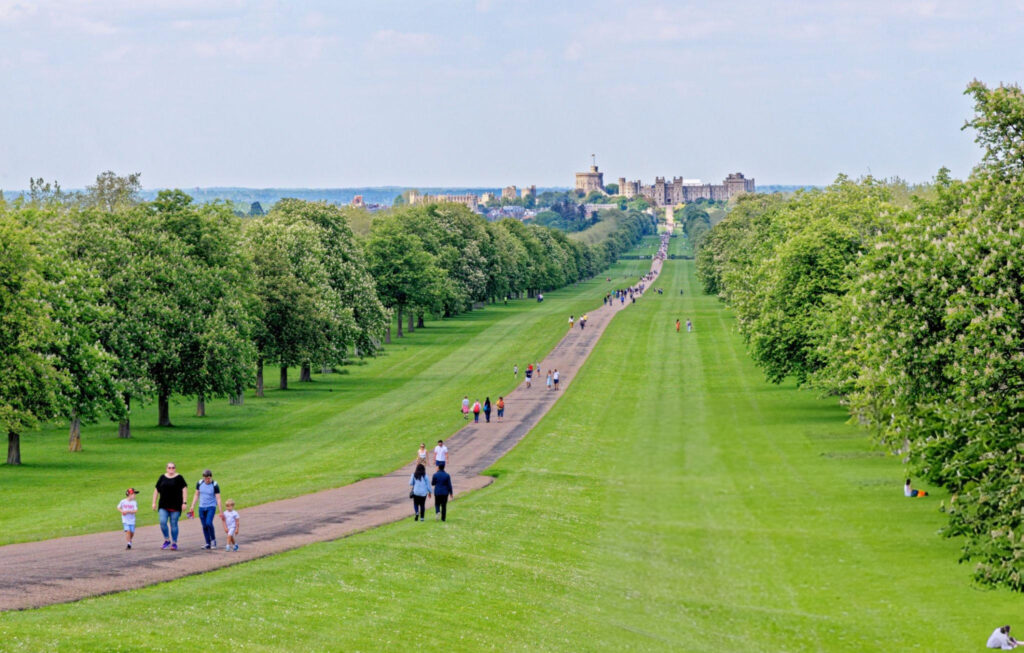Windsor Castle, located in Berkshire, England, is not only one of the oldest but also one of the largest inhabited castles in the world. Built by William the Conqueror in the 11th century, Windsor Castle has stood for nearly a thousand years, evolving through countless phases of British history. It has served as a royal residence, a fortress, and a symbol of continuity for the British monarchy, making it an architectural and cultural marvel that draws visitors from all over the world.
A Castle Built by Conquest
The story of Windsor Castle begins shortly after the Norman Conquest of England in 1066. William the Conqueror, recognizing the strategic importance of the Thames Valley, selected the location to build a fortress that would not only protect the western approaches to London but also demonstrate his power over England. The castle’s original purpose was military, designed as a motte-and-bailey fortress with a wooden structure. It was part of a chain of fortifications that helped William secure his reign and keep potential uprisings in check.
The Evolution of Windsor Castle
Over the centuries, Windsor Castle was transformed from a wooden fortress into a sprawling stone palace. Henry II replaced the wooden structures with stone, fortifying the castle and adding to its grandeur. Subsequent monarchs, each with their vision, contributed to Windsor Castle’s evolution. Edward III, one of England’s most powerful medieval kings, undertook extensive rebuilding efforts to turn Windsor into a gothic masterpiece, investing heavily to make it a fitting residence for a monarch. The transformation included the creation of the majestic St. George’s Chapel, an iconic symbol of Windsor Castle and the seat of the Order of the Garter, England’s oldest order of chivalry.

A Royal Residence Through the Ages
One of Windsor Castle’s most remarkable features is its continuity as a royal residence. Unlike other castles that eventually fell out of use or became ruins, Windsor has been continuously occupied by the monarchy, adapting to the needs of each era. It has witnessed the reigns of nearly 40 British monarchs and has been a favored residence of Queen Elizabeth II, who spent a significant amount of time at the castle, especially during her later years.
The castle serves as both a private home and a public space, where state functions, royal ceremonies, and investitures are held. Foreign dignitaries, including presidents and heads of state, are often hosted in the opulent rooms of Windsor Castle, further solidifying its status as an emblem of British heritage and monarchy.
The Architecture and Grounds of Windsor Castle
Architecturally, Windsor Castle is a mix of styles reflecting the various periods it has been through, from medieval to gothic to Georgian. Some of the most notable parts of Windsor Castle include:
- The Round Tower: This iconic circular tower is one of the most recognizable parts of Windsor Castle. Initially built as a defensive feature, it now houses the Royal Archives and overlooks the surrounding countryside.
- St. George’s Chapel: One of the finest examples of Gothic architecture in England, St. George’s Chapel has witnessed numerous royal weddings and burials, including that of Prince Philip, Duke of Edinburgh. The chapel holds immense historical significance and is the spiritual home of the Order of the Garter.
- The State Apartments: Lavishly decorated with works by artists like Rembrandt, Rubens, and Canaletto, the State Apartments are where the castle’s most important rooms reside. These spaces are used for ceremonial occasions and contain an extensive collection of art and artifacts that showcase the history and wealth of the monarchy.
- The Long Walk: A tree-lined avenue leading up to the castle’s gates, the Long Walk is both picturesque and symbolic.

- It has often been used for ceremonial processions, allowing visitors and locals alike to catch a glimpse of the royal family.
The Fire of 1992 and Restoration Efforts
One of the most challenging episodes in Windsor Castle’s recent history was the devastating fire that broke out on November 20, 1992. The blaze destroyed or severely damaged 115 rooms, including several historic areas, and the restoration work took nearly five years to complete.
The project involved hundreds of craftsmen and cost millions of pounds, but it also gave conservators a unique opportunity to restore the castle with meticulous detail, using historical methods and materials.
Today, Windsor Castle is fully restored, and the areas affected by the fire now showcase even more of the castle’s history and grandeur. The fire and subsequent restoration stand as a testament to the resilience and enduring importance of Windsor Castle in British history.
Windsor Castle in Modern Times
Windsor Castle continues to serve both as a family home and a center of national heritage. It remained a favorite retreat of Queen Elizabeth II, who sought refuge there during World War II and the COVID-19 pandemic. Her legacy and love for the castle further cement its reputation as a royal and historic symbol.
Today, the castle is open to the public, allowing visitors to explore its State Apartments, view the Changing of the Guard, and tour the breathtaking St. George’s Chapel. Windsor Castle is not only a popular tourist destination but also a site of ongoing cultural importance, providing a tangible connection to British history and the monarchy.

A Living Legacy of British History
Windsor Castle’s importance goes beyond its role as a royal residence. It stands as a witness to over a millennium of history, serving as a fortress, a palace, and a museum of British heritage. It symbolizes the continuity of the British monarchy and the resilience of British culture, adapting through centuries of change, war, and restoration.
From William the Conqueror to Queen Elizabeth II, Windsor Castle has been a silent observer of Britain’s story, holding within its walls the echoes of its past rulers and events that shaped the nation. Whether for its architecture, its art collections, or its living history, Windsor Castle remains a must-visit landmark, one that represents both the grandeur and resilience of England’s heritage.

